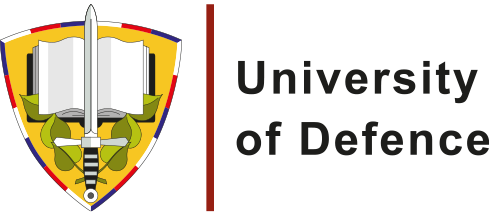|
Platinum Partner |
|
FFF General Partner |
|
FFF Partner |
|
FFF R&D Partners |
|
Exhibition Partners |
|
Mobility partner |
|
|
- DATE: Thursday, 17 October 2024
- TIME: 13.20 – 16.45 h
- VENUE: PVA EXPO PRAGUE – Conference Hall 1, Entrance Hall 2
- OFFICIAL LANGUAGE: English
- REGISTER ONLINE – Free online registration

Under the Auspices of the Director of Force Development Division
 |
 |
The Future Land Forces Panel is organised under the auspices of BG Petr MILČICKÝ, Ph.D., MSc – Director of Force Development Division, Ministry of Defence, CZE |
PREAMBLE
“The first and most important rule to observe ... is to use our entire forces with the utmost energy. The second rule is to concentrate our power as much as possible against that section where the chief blows are to be delivered and to incur disadvantages elsewhere, so that our chances of success may increase at the decisive point. The third rule is never to waste time. Unless important advantages are to be gained from hesitation, it is necessary to set to work at once. By this speed, a hundred enemy measures are nipped in the bud, and public opinion is won most rapidly. Finally, the fourth rule is to follow up our successes with the utmost energy.” Carl von Clausewitz
Welcome to the Future Land Forces Panel 2024, organized in cooperation with the Czech Armed Forces. The Conference aims to bring together land forces community, subject matter experts, industry, and academia stakeholders to address the main conceptual challenges of the future land operation within multidomain environment.
The conference will address the main key issue of operational and tactical context and operating environment which is characterized by complexity, instability, uncertainty, and pervasive operation. It is obvious that we have to things differently to provide credible military capabilities. We also must conceptually pragmatic recognize the constrain of military re-capitalized equipment program.
The future forces design must seek to deter adversaries form acting against our nation and our allies’ interest. This will require to operate in multidomain framework but also work with civilian services within crisis response operation. As a heart of future land forces is the idea that we shall enhance joint action, being more integrated as a land force and more adaptable to changing environment.
A solution and way forward need to be found via mutual effort and cooperation of all involved parties mainly by users, industry, and subject defence matter experts from academia. This key triangle efforts will bring future tactical and operational capabilities to our soldiers in any operation.
An integral part of the conference is the informal exchange of information and networking within broader land forces community.
MG (Ret.) Ivo ZBOŘIL
Conference Expert Guarantor; Former Director of the Force Development Division – Operational Section of the Ministry of Defence; Former Chief of the Military Office of the President of the Czech Republic
The Battlefield Management System (BMS) at the unit level is a key element of modern military Command and Control
The Future Land Forces Panel 2024 will focus on the Battlefield Management System (BMS) at the unit level as a key element of modern military command and control. It brings integration of information, communication, and coordination between the different components of the armed forces.
Main Areas of Discussion:
Sensors and Data Collection: A modern BMS requires reliable sensors to collect battlefield situational awareness. This includes radar systems, cameras, sensors, GPS and others. The development of sensors and their integration into the BMS is a key factor.
Communication Infrastructure: Fast and reliable communication between units is essential. The BMS must support a variety of communication channels, including radio networks, data links and satellite communications.
Data Analysis and Decision-Making: The BMS must be able to analyse large amounts of data and provide relevant information to commanders. This includes artificial intelligence algorithms for target identification, weapon system recommendations and rapid decision making.
Integration with Other Systems: The BMS must be able to communicate with other military systems such as tactical control systems, navigation systems and sensors. Integration of these systems allows for better coordination and collaboration.
Training: Units must be able to use the system effectively and respond to a variety of situations.
Cyber Security: The BMS is vulnerable to cyber-attacks. Developing security measures and protecting against threats are essential.
Standardisation and Interoperability: Different militaries and organisations use different BMS systems. Standardisation and interoperability are a challenge for cooperation and information sharing.
Emerging Disruptive Technology: Overall, successful BMS development is dependent on addressing these challenges and on collaboration between military organisations, developers, and manufacturers.
PROGRAMME
13.20 – 13.30 h OPENING REMARKS | BG Petr MILČICKÝ – Director of the Force development Division, Armed Forces of the Czech Republic
13.30 – 13.50 h DISMOUNTED INFANTRY OF UKRAINE – LEGACY, ADAPTATION, AND PROSPECTS | Mr. Leonid POLYAKOV – Deputy Director, Head of Security Studies Centre, National Institute for Strategic Studies, Ukraine
Abstract: Ukrainian dismounted infantry in the units of Land Forces, assault troops, marines, and the National Guard is a force component, that came under the heaviest pressure by the current type of war when long periods of static attrition warfare were periodically changed by short periods of operational level maneuvers. It is instructive to investigate lessons of Ukraine’s professional and mobilized infantry adjusting its post-soviet legacy and numerical disadvantage vis-à-vis Russians to the war complexities and fluidity of the battlefield.
Further on, progress in the development of specific techniques, weapons, and battle management systems during this war required correspondent tactical and technological adaptation. If these experiences are properly assessed, they will lay the groundwork for the development of successful future concepts and models of dismounted infantry employment. Of particular interest could be the comparison of the evolution of the Ukrainian concept of the “Future Soldier” with the Western concept of the “Dismounted Soldier”, especially concerning technology and robotics.
13.50 – 14.10 h DISMOUNTED UNIT FOR 21st CENTURY | Mr. Vladimír CHLUP – MBK system architect in Czech Army, PRAMACOM-HT, Czech Republic
Abstract: MBK (Modular Combat System) is the Soldier System of CZ Army used since 2015. The actual challenge is MUM-T (Manned-Unmanned Teaming) and MASO-T (Manned-Soldier Teaming).
14.10 – 14.30 h ENHANCING THE MOUNTED WARFIGHTER. COMBAT PROVEN BMS SINCE 2006 | Mr. Haakon H. HEYERAAS – Product Owner at Teleplan Globe and former armor officer, Norwegian Army
Abstract: Teleplan Globe has partnered with warfighters,- and continously developed our BMS since 2006. It is currently fielded with the whole mechanized structure of the Norwegian Army. We aim to enhance the Czech mounted warfighting capabilities to the next level.
14.30 – 14.50 h ADVANCED DISMOUNTED PORTABLE OPTRONICS IN U.S. | Mr. Tim BRAUCH – ex-US Special Operator with JTAC qualification, SAFRAN DSI OPTRONICS (former Optics1), USA
Abstract: Optics1 is a global leader in electro-optic and navigation systems in the U.S. Specifically MOSKITO TI (known as STALKER or LTLM in the U.S. Army), JIM Compact (as HRTV), E-COTI (AN/PAS-29A) or CTAM are well-known products also in CZE Army since 2016. The focus is on system approach (software ATAK/MyVector) and SWAP for dismounted soldier.
14.50 – 15.10 h WAVERELAY ECOSYSTEM (UAV, UGV) | Mr. Nick NAIOTI – VP Business Development, Persistent Systems, LLC, USA
Abstract: Persistent Systems is a global leader for wideband MANET communication system based on its own WaveRelay waveform. The main system, so-called MPU5, is used in many UAV (for e.g. Indago-4) and UGV platform, as well as by dismounted soldier with RoIP capability to already used C4 systems.
15.10 – 15.25 h COFFEE BREAK
15.25 – 15.45 h UAV NEW ELEMENT OF THE CURRENT WARFARE | Mr. Natan KHAZIN – Military expert, drones and C4ISR, Ukraine
15.45 – 16.45 h PANEL DISCUSSION
Moderated by BG František MIČÁNEK – Former Dean, NATO Defense College
Panellists: Mr. Vladimír CHLUP; Mr. Jack HUMPHREY; Mr. Tim BRAUCH; Mr. Nick NAIOTI; Mr. Leonid POLYAKOV; Mr. Nathan KHAZIN
16.45 CLOSING REMARKS | MG (Ret.) Ivo ZBOŘIL
| The program may be subject to change.






